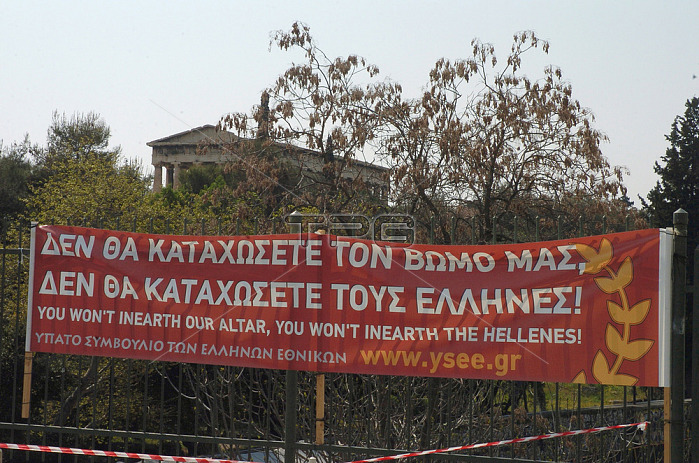
ATHENS Altar enclosed in a peribolos wall; near the north end of the Agora.Rectangular altar. Peribolos wall of stone posts and slabs supported by a poros sill. Entrances on east and west.dentified by an inscribed marble statue base found in situ on west side of the peribolos wall. Original altar was built in 522/21 B.C. by Peisistratos. Rebuilt ca. 425 B.C. to repair damage suffered in the Persian invasion of 480/79 B.C. The altar was used as the central point for measuring road distances. From the 5th century B.C.; the altar became associated with the Goddess of Pity; probably because the enclosed area served as a place of asylum. A round marble altar of the 4th century B.C. may also have been in the sanctuary.According to Thucydides; the Altar of the Twelve Gods was founded during the tyranny of Peisistratus by his grandson of the same and son of the tyrant Hippias in 522-521 BC; It marked the very center of the ancient city.襊indar; obviously in reference to the altar in his dithyramb for the Athenians; called on the gods of Olympus to dance near the fragrant; much-frequented navel of the holy city of Athens; the renowned and exquisitely adorned Agora.覶he Altar of the Twelve Gods was partially destroyed during a Persian raid in the 480-479 BC period and was not rebuilt until several decades later; as evidence found during the excavation of the Ancient Agora; including worn stones and seashells believed to date to the fourth quarter of the 5th century B.C.IN THE PHOTO A PROTEST TO THE DESTROYING OF THE TEMPLE
| px | px | dpi | = | cm | x | cm | = | MB |
Details
Creative#:
TOP25174322
Source:
達志影像
Authorization Type:
RM
Release Information:
須由TPG 完整授權
Model Release:
No
Property Release:
No
Right to Privacy:
No
Same folder images:

 Loading
Loading